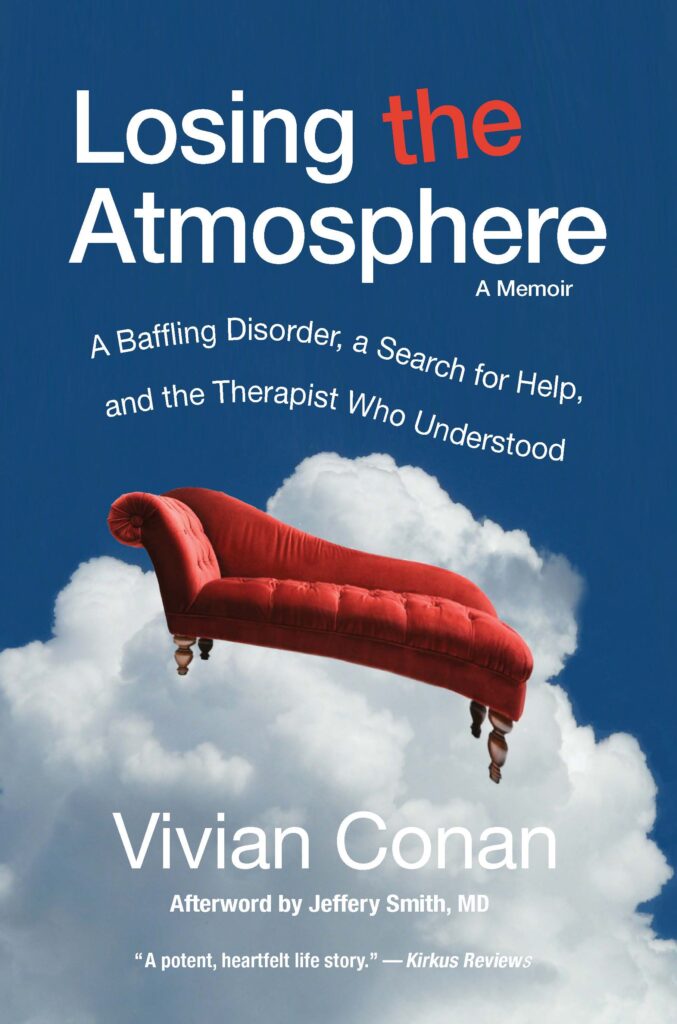
Vivian would be happy to attend your book group meeting. Please see the contact page.
1) VIVIAN
1-1)
Vivian’s fantasy world, the Atmosphere,
is adaptive at first, because it provides the emotional support she isn’t
getting elsewhere.
When does the Atmosphere become
maladaptive?
What are some comparable “devices”
other people use to cushion their world?
1-2)
Over the course of many years, Vivian
goes from wanting to feel better to wanting to get better.
What is the difference?
1-3)
Thoughts of suicide allow Vivian to
function: As long as she knows she has an out, she can endure what she is going
through.
What are other examples of how
something generally construed as negative can actually be helpful?
1-4)
What role does forgiveness play in
Vivian’s emotional healing?
What is the difference between
forgiving and forgetting?
1V-5)
One of the books Vivian reads, Island
of the Blue Dolphins, has a profound effect on her.
What about the book causes her to
react?
If you read Island of the Blue
Dolphins, what response did it evoke from you?
1-6)
Vivian’s experiences may have been
extreme, but her life is relatable on many levels.
What aspects of her story are
universal?
1-7)
Assuming time-travel was possible, what
might the Vivian at the end of the book tell the Vivian at the beginning of the
book?
2) FAMILY
2-1)
Vivian reacts to her father’s
constraints by escaping to a complex inner world, while outwardly she follows
his strict rules. In contrast, her brother sometimes fights back.
One might assume children with the same
parents are affected the same way, but in Vivian’s case, they aren’t. Why do
you think this is?
2-2)
Vivian belongs to a large, warm,
Greek-Jewish clan that is the antithesis of her nuclear family.
In what ways do her nuclear and
extended families shape her?
2-3)
Vivian often relies on her mother to
shield her from her father.
What is the role of one parent in
protecting the child from the other parent?
What are the child’s expectations of
the protector parent?
2-4)
In the latter part of the book,
Vivian’s mother becomes increasingly aware of the effect of her parenting and
discusses it with Vivian.
Is this helpful for Vivian?
When and how should a parent have this
kind of discussion with adult children?
Is it always/usually/sometimes
appropriate or helpful?
2-5)
The adult Vivian’s relationship with
her parents changes as she comes to understand how their histories shaped them.
What prompted Vivian to seek this
understanding?
How does the process evolve with her
mother? Her father?
3) THERAPY
3-1)
In therapy, the relationship between
therapist and client is part of the healing.
How does this play out for Vivian?
3-2)
What was the process of finding a
therapist like in Vivian’s time?
What is it like today?
How do you go about finding a therapist
when you don’t know what’s wrong?
3-3)
Vivian sees seven therapists, each for
many years. They are helpful (or not) in different ways, but only the last is
able to pinpoint the problem and help her overcome it.
Why might Vivian, or anyone, stay with
a therapist even if the therapist doesn’t “get” them?
4) STRUCTURE OF THE BOOK
4-1)
Vivian tells her story chronologically,
as it unfolds for her. The reader doesn’t know anything before she knows it. There
are no observations along the way from an older, wiser Vivian looking back,
layering meaning onto what happened.
How did you feel about this structure?
What effect did it have on your
involvement with the story?
4-2)
There are no clinical explanations in
the body of the memoir. They come at the end, in the Afterword, where Vivian’s
therapist explains the theories and concepts of attachment and dissociation and
shows how they apply to Vivian.
Did you find the explanations helpful?
Would you have wanted them placed
elsewhere?
5) QUESTIONS FOR CLINICIANS
5-1)
How might Vivian’s mental health
trajectory have been different if she had been born today, when there is more
awareness of adverse childhood experiences (ACEs), relational trauma (betrayal
by people you love, trust, or rely on), and attachment?
5-2)
Dissociation allows Vivian to function
well at work, no matter what is going on inside her.
In what ways can dissociation be
positive? Negative?
5-3)
Dissociation is what differentiates
Vivian’s internal child parts from the popular concept of “inner child.”
What roles do her child parts play in
advancing her healing? In holding her back from healing?
5-4)
What role does therapy play in Vivian’s
healing?
What other factors play a part in her
healing?
5-5)
Early attachment trauma caused the
adult Vivian to rely more on fantasy Atmosphere people for connection than on
real people.
What enabled her to eventually reverse
that?
5-6)
Not all therapists are
trained/qualified/able to treat all conditions.
After therapy has begun, what is the
responsibility of the therapist in evaluating whether it is a good fit?
How can the client determine this?
What might either of them do if they
feel it isn’t working?
5-7)
A trauma-informed therapist is aware of
the impact childhood trauma can have on adult clients. A trauma-competent
therapist is a trauma-informed therapist who is skilled in treating those
clients.
What goes into the making of a
trauma-competent therapist?
(Consider the role of experience,
training, relational style, comfort level of the therapist with the material,
and other factors.)
***
